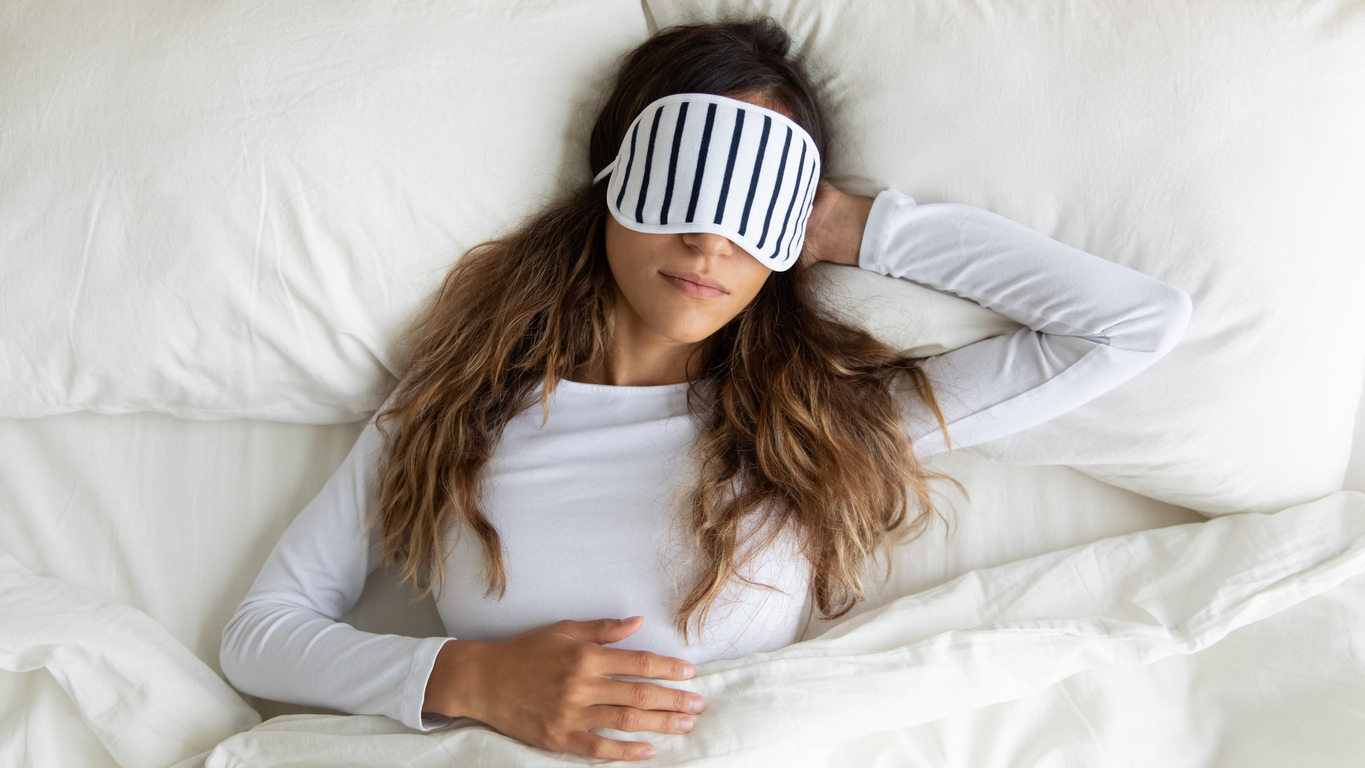The Latest Research: Vivid Dreaming During COVID-19? Here’s Why

Dreams are most often described as an array of images, feelings, and emotions, and occur primarily during the REM stage of sleep. The content of our dreams can have a profound impact on our day and in turn, how our day goes can have an impact on how we dream. Two recent studies published in the journal Dreaming contribute to our picture of how COVID-19 is affecting this cycle.
Study 1 Summary:
Are you someone who usually struggles to remember your dreams? That may be changing over the course of this pandemic.
To better understand the impact of COVID-19 on dreams, a recent study conducted by Schredl & Bulkeley (2020) gathered information from over 3,000 people across the United States via an online survey. Specifically, they asked if the rate of remembering dreams increased or decreased over the past month, if participants ever had a dream related to COVID-19, and if their dreams have been more negative since the outbreak. Additionally, participants were asked if they have been personally affected by the virus in any of the following ways: physical health (theirs or loved ones), employment, finances, socially, and mental health.
Most of the participants stated that they were affected by the virus, with the largest area of impact being social interaction. When looking at the dream related questions, about a third stated that they were able to remember more of their dreams. The nature of the dreams also became more negative due to the pandemic, and a handful of participants said that their dreams were COVID-19 related. Interestingly, being able to recall one’s dreams was more apparent in younger individuals and those who had a higher education. Not only that, but women had an increase in negative dreams in the previous month compared to men. Women and individuals with a higher education were also more likely to report having a COVID-19 related dream.
Study 2 Summary:
Mackay & Decicco, (2020) used dream journal data to examine potential differences in dream contents between a control group who journaled their dreams prior to COVID-19 and a group who journaled their dreams during the initial spread of COVID-19. The samples were matched on age and gender and included 19 people in each group.
Previous research suggests that people who experience daytime anxiety tend to experience more frequently changing locations in their dreams as well as more imagery of animals (DeCicco et al., 2013; Miller et al., 2015). Given the multifaceted stress many people are experiencing during the pandemic, the researchers expected to find that those in the COVID-19 journaling group would experience more instances of location changes and animal imagery in their dreams. Indeed, results showed that those in the COVID-19 group recorded significantly more instances of location changes (e.g., the dream character moves locations through a means other than self-propelled activity), and images including animals.
Participants also reported more total virus-related imagery such as the words COVID-19 and Coronavirus, coughing, crowded grocery stores, medical supplies and medical workers, and images of isolation. In addition, participants recorded more dreams involving food and imagery relating to the head and neck region, which researchers believe may be linked to concerns regarding food, food shortages, or stocking up on supplies, and coughing, temperature taking, or wearing masks, respectively.
A significant change has been seen in the content of dreams during the pandemic. It appears that more experiences associated with waking-day anxiety and the virus itself are invading our sleep, highlighting the stressors many people are facing during this time.
Dreaming in the pandemic:
Together, these new studies show that the pandemic is not only affecting day-to-day life and well-being but also how we dream. Continued research on dreaming during this unprecedented time may be useful for learning how dreams relate to concerns about specific aspects of life such as health and social interactions.
Article 1:
Schredl, M., & Bulkeley, K. (2020). Dreaming and the COVID-19 pandemic: A survey in a U.S. sample. Dreaming, 30(3), 189-198. doi:10.1037/drm0000146
https://www.apa.org/pubs/journals/releases/drm-drm0000146.pdf
Article 2:
Mackay, C., & Decicco, T. L. (2020). Pandemic dreaming: The effect of COVID-19 on dream imagery, a pilot study. Dreaming, 30(3), 222-234. doi:10.1037/drm0000148
https://www.apa.org/pubs/journals/releases/drm-drm0000148.pdf
Other references:
Miller, N. J., DeCicco, T. L., Dale, A. L., & Murkar, A. (2015). Assessing the effects of meditation on dream imagery, depression, and anxiety. International Journal of Dream Research, 8, 99 –104.
https://www.researchgate.net/profile/Anthony_Murkar/publication/287546853_Assessing_the_effects_of_meditation_on_dream_imagery_depression_and_anxiety/links/59fc8982aca272347a217ad2/Assessing-the-effects-of-meditation-on-dream-imagery-depression-and-anxiety.pdf
DeCicco, T. L., Zanasi, M., Dale, A. L., Murkar, A., Longo, G., & Testoni, F. (2013). A cultural comparison of dream content, mood, and waking day anxiety between Italians and Canadians. International Journal of Dream Research, 6, 8 –12.
https://www.semanticscholar.org/paper/A-Cultural-Comparison-of-Dream-Content%2C-Mood-and-Decicco-Zanasi/23c8b645c4261f549727dfe84cb7aed5107ad7a8?p2df